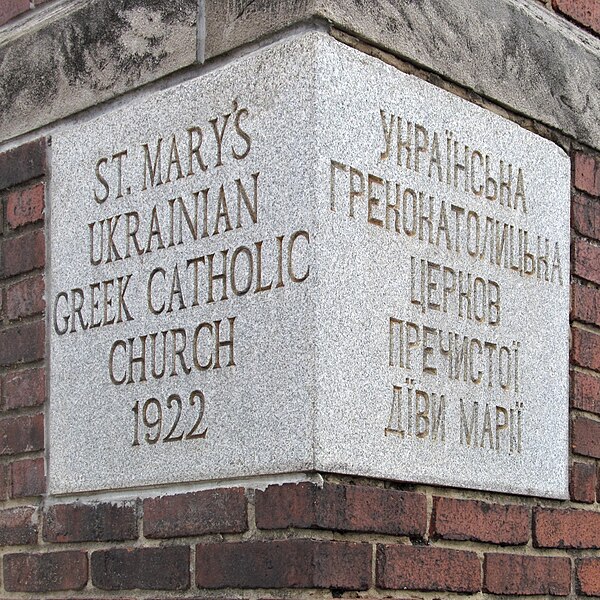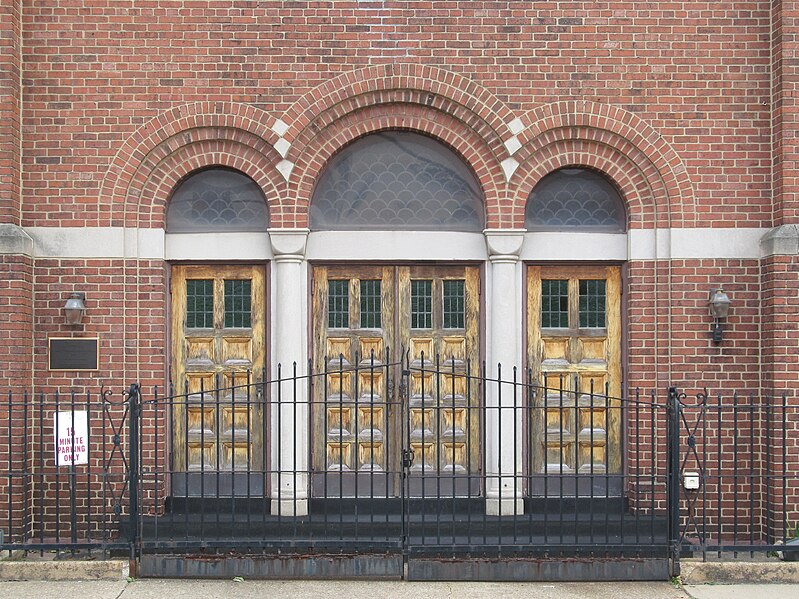
Now St. Mary Ukrainian Orthodox Parish. The history of Catholic and Orthodox Ukrainian Christians in the United States is complicated, and old Pa Pitt will not attempt to sort it out here. It ends with double Ukrainian churches in many neighborhoods, and that is the case here: there is a more recent Ukrainian Catholic church around the corner from this one.
This impressive building was designed by Carlton Strong (whose full name was Thomas Willet Carlton Strong, and no wonder he usually shaved off half of it). Strong’s most famous work was the magnificently Gothic Sacred Heart in Shadyside, but he adapts very well to the Byzantine style here and gives the Bottoms a distinctive addition to its skyline.






The rectory is in a different style; it is certainly one of the most splendid houses in the Bottoms.

The fence behind the rectory has recently been repainted in a patriotic color scheme.

Carlton Strong, incidentally, came to Pittsburgh as a designer of apartment buildings, giving us the Bellefield Dwellings as his first work here. He later converted to the Catholic faith and became one of our most prominent church architects. You can read a good biography of Carlton Strong by the distinguished local historian Kathleen M. Washy on line:






